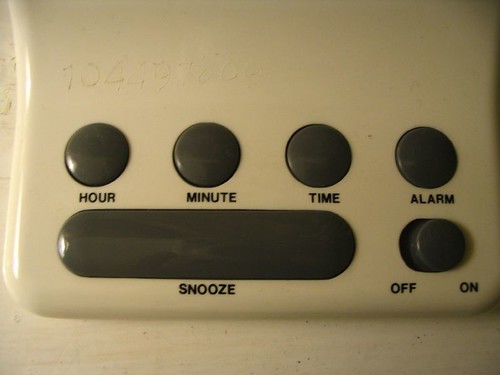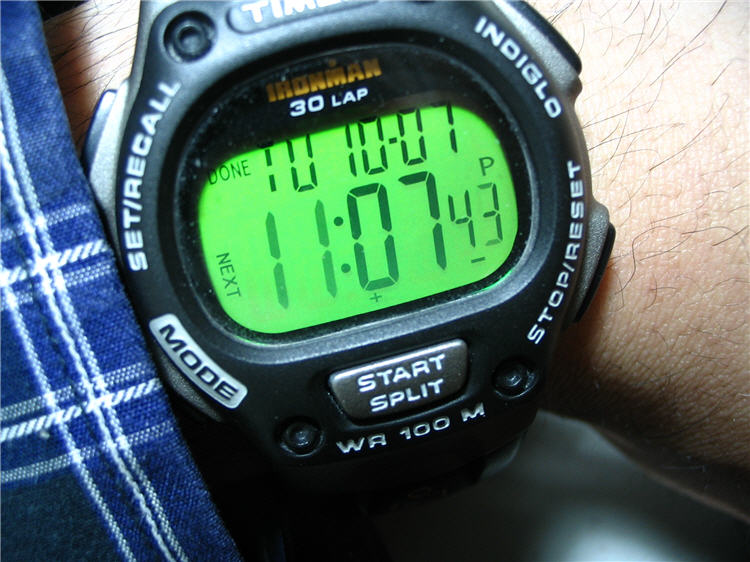My PDA is my backup brain
I have a love-hate relationship with my PDA. I bought it in 2004 after reading David Allen's GTD (which continues to be for me an excellent time-management system). Got the bigger battery. Got a replacement for the inferior Pocket Outlook.
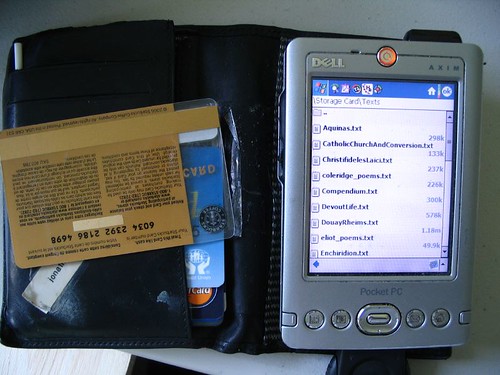
When combined with the GTD method and Outlook on the desktop, it becomes a powerful system. New ideas can be immediately entered into an appropriate GTD list or the calendar. All of your contacts' addresses and phone numbers are readily available. It helps that the unit turns on instantly when you press the power button.
For input, I use a stylus and a special keyboard layout called Fitaly, which puts frequently-used letters in the middle (see below). I'm actually not using Fitaly's product, but Resco Keyboard which you can hack. I've added a numeric keypad on the right, with symbols. For example, swiping up on "1" produces "!":
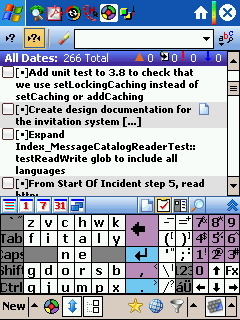
Recently I've been downloading a number of Project Gutenberg e-texts to my PDA. One thing that makes reading e-books a lot easier is a text viewer that remembers where you last stopped reading each file. Haali Reader will do this for you:
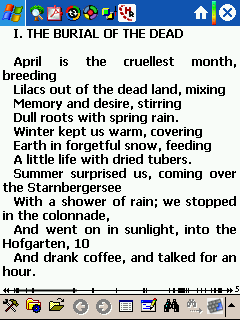
There are things that I don't like about this PDA. It's getting old, and there are times when it freezes on startup, which can be frustrating. Also, Dell has stopped producing PDAs, which is a shame as they had a superb product line. At least HP continues to make them.
Meanwhile, I'm trying various things to make this PDA last as long as possible, such as installing a plastic card to protect the screen. Fastened with heavy-duty packing tape, it automatically moves into position when the case is closed:
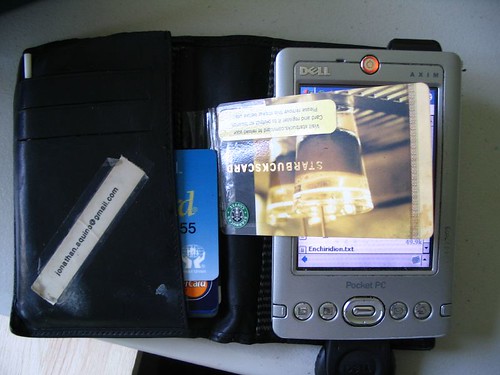

When combined with the GTD method and Outlook on the desktop, it becomes a powerful system. New ideas can be immediately entered into an appropriate GTD list or the calendar. All of your contacts' addresses and phone numbers are readily available. It helps that the unit turns on instantly when you press the power button.
For input, I use a stylus and a special keyboard layout called Fitaly, which puts frequently-used letters in the middle (see below). I'm actually not using Fitaly's product, but Resco Keyboard which you can hack. I've added a numeric keypad on the right, with symbols. For example, swiping up on "1" produces "!":

Recently I've been downloading a number of Project Gutenberg e-texts to my PDA. One thing that makes reading e-books a lot easier is a text viewer that remembers where you last stopped reading each file. Haali Reader will do this for you:

There are things that I don't like about this PDA. It's getting old, and there are times when it freezes on startup, which can be frustrating. Also, Dell has stopped producing PDAs, which is a shame as they had a superb product line. At least HP continues to make them.
Meanwhile, I'm trying various things to make this PDA last as long as possible, such as installing a plastic card to protect the screen. Fastened with heavy-duty packing tape, it automatically moves into position when the case is closed:




